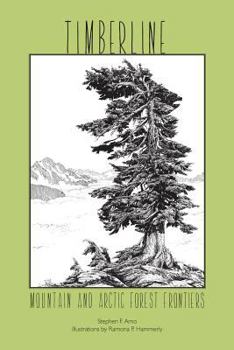Timberline: Mountain and Arctic Forest Frontiers
Timberline--where the trees end--is a biological boundary visible throughout North America to even the casual traveler. Where highways or hiking trails ascend to upper timberlines (ranging from below 2000-foot elevations in Alaska to over 11,000 feet in California), visitors see patchy forest and meadows giving way to stunted trees and finally to mere shrub-like trees and tundra. This book describes what timberlines are and why they exist, and what human uses have been made of the timberline environment. It surveys tree species and conditions of individual North American timberlines----in the Pacific Coast, Great Basin, Southwest, and Mexican mountains; in the Rockies and Northern Appalachians; and in the Arctic--with reference to timberlines worldwide.
Format:Paperback
Language:English
ISBN:0898860857
ISBN13:9780898860856
Release Date:December 1984
Publisher:Mountaineers Books
Length:304 Pages
Weight:0.74 lbs.
Dimensions:0.8" x 5.3" x 8.4"
Customer Reviews
1 rating
Timberline
Published by Thriftbooks.com User , 18 years ago
Timberline - where the trees end - is a biological boundry visible to even the casual traveler throughout North America. Where highways or hiking trails ascend to upper timberlines (ranging from below 2000-foot elevations in Alaska to over 11,000 feet in California), visitors see patchy forest and meadows giving way to stunted trees and finally to mere shrub-like trees and tundra. A lower timberline is seen in the semi-arid west at the foot of mountain ranges. Those who fly over northern Canada or Alaska see a cold produced "arctic timberline" snaking across the continent. This book describes what timberlines are and why they exist, and what human uses have been made of the timberline enviroment. It surveys tree species and conditions of individual North American timberlines - in the Pacific Coast, Great Basin, Southwest and Mexican Mountains; in the Rockies and Northern Appalachians, and in the arctic - with reference to timberlines worldwide. --- from book's back cover





